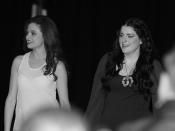IT for Fast Fashion Case Study
Zara is a flagship store for the Spanish Inditex Group, one of the largest fashion retail groups worldwide and currently contributes to 65.6% of its sales. The company has 1520 stores (as at end of 2008, including Zara Kids) and opened 159 stores in 2008 (Inditex 2009). Its stores are located in cities across Europe, America and Asia, present in 72 countries, offering up to date trends in international fashion. It has overtaken Hennes and Mauritz to become Europe's largest fashion retailer, providing affordable quality clothing and footwear for women, men and children (Tiplady 2006). The environment in which Zara is operating is highly competitive due to the fast moving nature of fashion where the consumer is fashion confident and expects product innovation. What is the best way on which Zara has to focus to be competitive and profitable on a permanent basis? Going through an analysis of the Porter's five forces of Zara will give us an overview of its direct environment which then will allow us to discuss the improvements that can benefit Zara's IT systems against its competitors and identify what is the main resource that Zara exploited to build its advantage.
The competitive rivalry of Zara is really high. Its first competitors in the market are Gap and Hennes & Mauritz. H&M remained the market leaders until they were supplanted by Zara in March 2006. Zara's sales rose by 21% to $8.5 billion while profits increased 26% to $1 bn. Even if Gap has more stores than Zara, its margin is 10.9% compared to Zara's one which is 16.2% (Tiplady, 2006). Only present in 22 countries, H&M have had higher sales, profits and margins in the past. They also operate on a different production system which involves forecasting trends nine...


